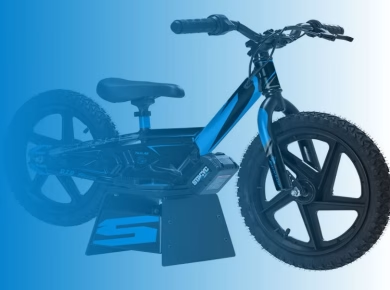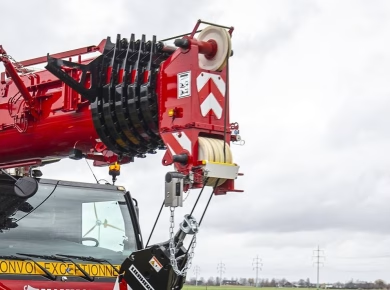The hum of machinery, the shuffling of boots on gravel, and the distant echoes of hammering are familiar sounds in the world of mining. But beneath the surface, safety remains a paramount concern, one that has evolved dramatically with the advent of new technologies. As someone who has spent years navigating the complexities of underground work, I can attest to the transformative power of innovation in mining safety. Today’s tools not only enhance operational efficiency but also create safer environments for every worker on site.
Understanding the Landscape of Mining Safety
Mining has always posed significant risks, from cave-ins to toxic gas exposure. The statistics surrounding mining accidents are sobering, with fatalities and injuries reminding us of the stakes involved. However, the landscape is changing. Technology is stepping in to bridge the gaps that traditional safety measures have often left open. Understanding how these innovations fit into the existing framework of mining operations is crucial for professionals tasked with site management and compliance.
The Role of Data Analytics
One of the most promising advancements in mining safety is the use of data analytics. By harnessing data from various sources—equipment sensors, worker reports, and environmental monitoring—we can gain insights that were previously inaccessible. For instance, predictive analytics can identify patterns that indicate potential hazards, allowing teams to address issues before they escalate.
In a recent project, we implemented a data analytics platform that aggregated real-time data from our underground operations. The results were staggering; we reduced near-miss incidents by over 30% in just six months. The ability to anticipate problems based on historical data makes a compelling case for integrating such technologies into safety protocols.
Real-Time Monitoring Solutions
The introduction of real-time monitoring solutions has revolutionized how we approach mining safety. Wearable technology, such as smart helmets and vests equipped with sensors, allows for constant monitoring of workers’ health and environmental conditions. These devices can detect changes in air quality, temperature, and even the heart rates of the miners, alerting them to potential dangers before they become life-threatening.
Implementing Wearables on Site
In practice, deploying these wearables requires careful planning and training. When we first introduced smart helmets at our site, we faced resistance. Workers were skeptical about the technology and concerned about privacy. However, after a few weeks of training and demonstrating the helmets’ capabilities—like their ability to alert users to harmful gas levels—we saw a remarkable shift in attitude. Workers began to appreciate how these tools were not just another layer of oversight but essential devices designed to protect them.
Automated Machinery and Robotics
Automated machinery and robotics are another area where technology is making strides. Not only do they increase efficiency, but they also reduce the risk to human workers. Automation can take over repetitive and dangerous tasks, such as drilling and transporting materials, allowing personnel to focus on more complex operations that require human oversight.
Case Studies in Automation
A notable example is the use of autonomous trucks in open-pit mines. In a case study from one of our projects, the introduction of autonomous vehicles led to a 25% decrease in accidents related to transport operations. Operators were able to monitor these vehicles remotely, ensuring that human errors were minimized. The learning curve was steep, but with proper training and a phased rollout, the transition proved worthwhile.
Enhanced Training Programs
No matter how advanced the technology, the human element remains vital in mining safety. Enhanced training programs that incorporate these new technologies are essential for creating a culture of safety. When workers understand how to use safety equipment and technology effectively, they are more likely to take ownership of their safety and that of their colleagues.
Creating a Safety-First Mindset
In our training sessions, we emphasize scenario-based learning, using virtual reality (VR) to simulate dangerous situations without the risks associated with real-life experiences. This immersive approach has shown to improve retention rates and prepare workers for actual safety challenges. By fostering a safety-first mindset, we not only comply with regulations but genuinely protect our workforce.
The Future of Mining Safety
As we look to the future, the integration of artificial intelligence (AI) and machine learning will undoubtedly play a significant role in shaping mining safety. The potential for AI to analyze vast amounts of data and learn from it means we can expect even more significant advancements in predictive safety measures.
Staying Ahead of the Curve
To remain ahead of the curve, professionals in the mining industry must adopt a proactive approach to technology. Staying informed about emerging trends and innovations can provide a competitive edge and enhance overall safety. Networking with other industry professionals and attending conferences can also facilitate knowledge-sharing, ensuring that we are all equipped with the best practices for our teams.
In conclusion, the evolution of mining safety through technology is not just about compliance; it’s about creating a sustainable and safe working environment. Embracing advancements such as data analytics, real-time monitoring, automation, and enhanced training programs can significantly reduce risks and improve operational efficiency. As we move forward, let’s continue to prioritize safety by integrating these technologies thoughtfully and effectively, ensuring that every worker returns home safely at the end of the day.


